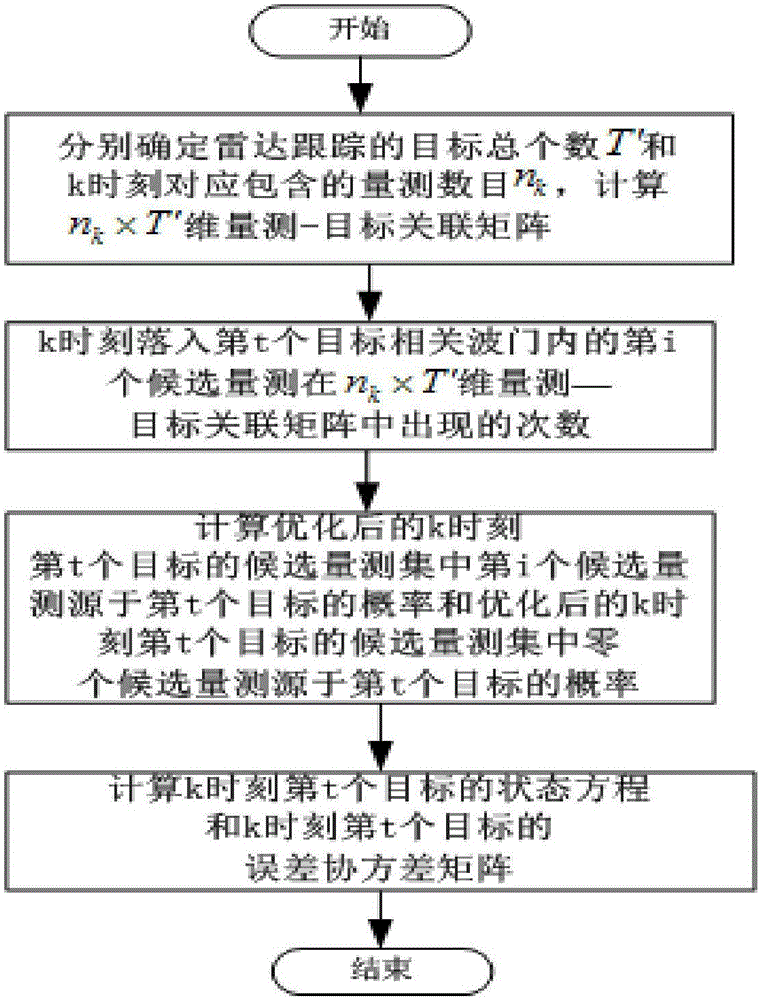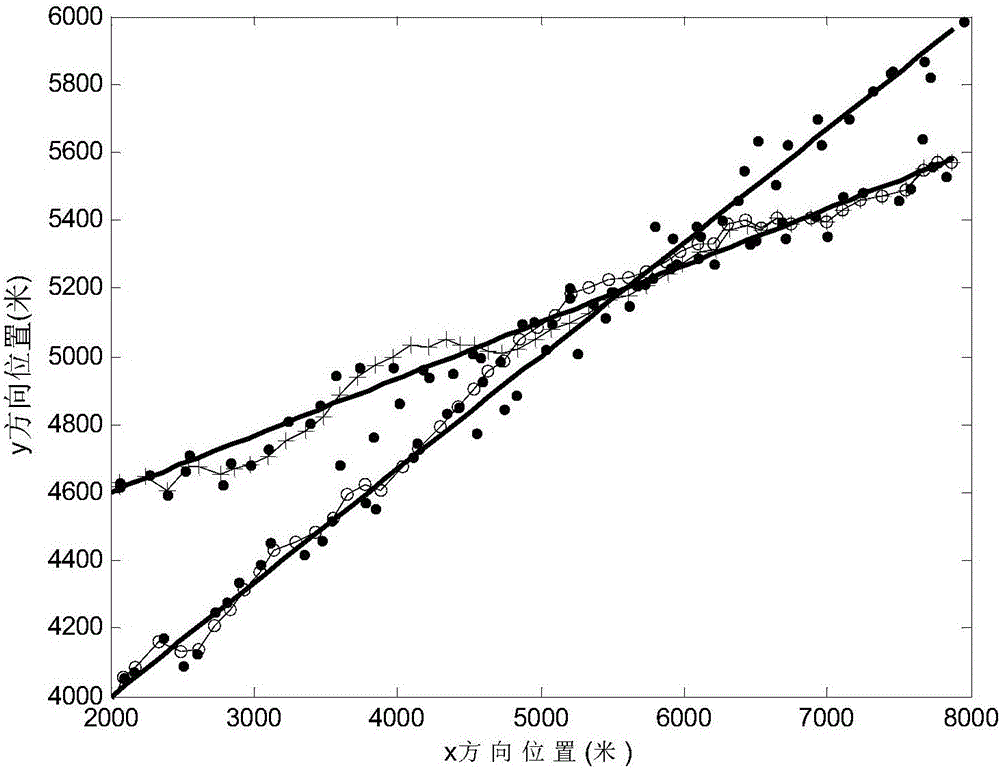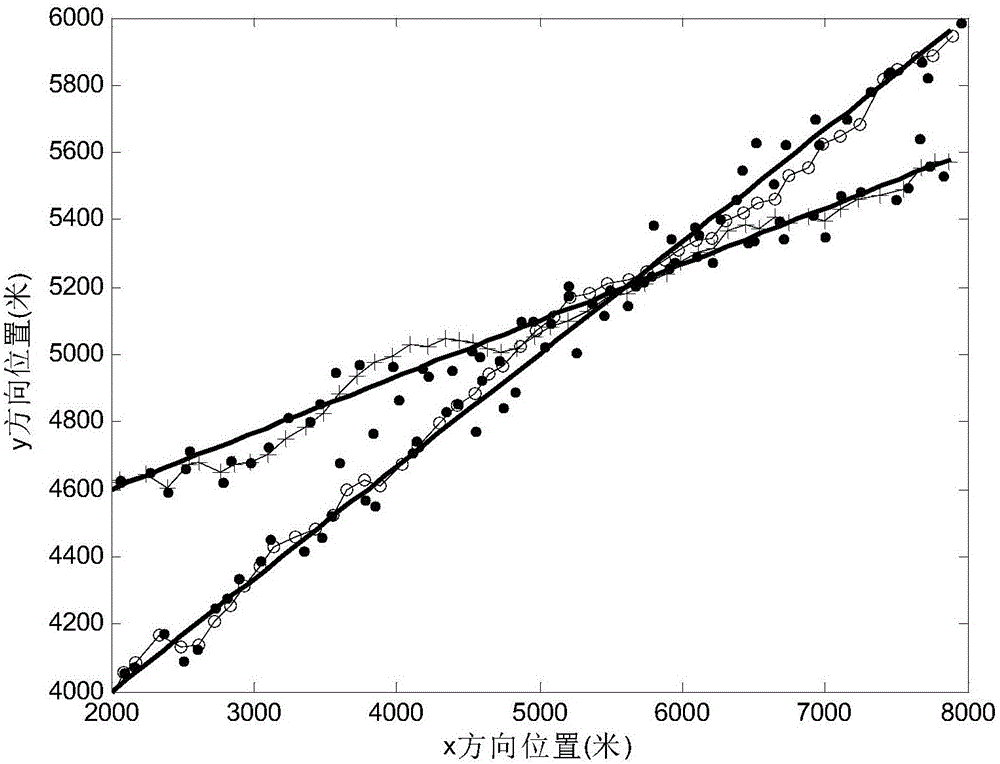Radar multi-target tracking optimization method based on data correlation method
A multi-target tracking and data association technology, applied in the field of radar multi-target tracking optimization based on data association algorithm, can solve the problems of low correct association rate, large amount of calculation, difficult implementation, etc., achieve good track separation and reduce target error Follow the probability, engineering to achieve easy results
- Summary
- Abstract
- Description
- Claims
- Application Information
AI Technical Summary
Problems solved by technology
Method used
Image
Examples
Embodiment Construction
[0022] refer to figure 1 , is a flow chart of a radar multi-target tracking optimization method based on a data association algorithm of the present invention; the radar multi-target tracking optimization method based on a data association algorithm comprises the following steps:
[0023] Step 1, respectively determine the total number of targets T′ tracked by the radar, and determine the number of measurements n corresponding to k time k , and respectively record the state estimation of the t-th target at time k-1 as Denote the state error covariance matrix of the t-th target at time k-1 as P t (k-1|k-1), the state transition matrix of the t-th target at time k-1 is recorded as F t (k|k-1), the measurement matrix of the t-th target at time k is recorded as H t (k), the process noise covariance matrix of the t-th target at time k-1 is recorded as Q t (k-1), the measurement noise covariance matrix of the t-th target at time k is denoted as R t (k), and then calculate the ...
PUM
 Login to View More
Login to View More Abstract
Description
Claims
Application Information
 Login to View More
Login to View More - R&D
- Intellectual Property
- Life Sciences
- Materials
- Tech Scout
- Unparalleled Data Quality
- Higher Quality Content
- 60% Fewer Hallucinations
Browse by: Latest US Patents, China's latest patents, Technical Efficacy Thesaurus, Application Domain, Technology Topic, Popular Technical Reports.
© 2025 PatSnap. All rights reserved.Legal|Privacy policy|Modern Slavery Act Transparency Statement|Sitemap|About US| Contact US: help@patsnap.com



